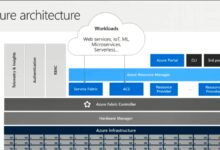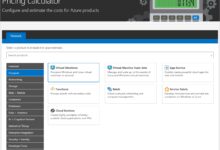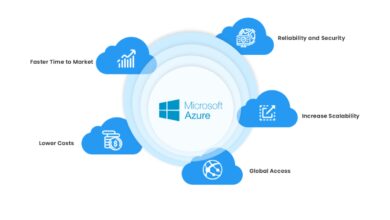Sign In to Azure: 7 Proven Steps to Access Your Account Fast
Signing in to Azure doesn’t have to be complicated. Whether you’re a developer, IT admin, or business owner, knowing how to sign in to Azure quickly and securely is essential for managing cloud resources efficiently.
Sign In to Azure: The Complete Beginner’s Guide

Microsoft Azure is one of the world’s leading cloud computing platforms, offering a wide range of services including virtual machines, databases, AI tools, and more. To access these services, the first step is always to sign in to Azure. This process might seem straightforward, but understanding the nuances can save time and prevent access issues.
What Is Microsoft Azure?
Microsoft Azure, formerly known as Windows Azure, is a comprehensive cloud platform that enables businesses and individuals to build, deploy, and manage applications through Microsoft’s global network of data centers. It supports multiple programming languages, frameworks, and tools—both Microsoft-specific and third-party.
- Offers over 200+ services including compute, storage, networking, and analytics.
- Used by enterprises, startups, and government agencies worldwide.
- Integrates seamlessly with other Microsoft products like Office 365 and Dynamics 365.
Before you can explore Azure’s capabilities, you must first sign in to Azure using a valid Microsoft account or work/school account. This authentication process ensures only authorized users can access sensitive data and configurations.
Why Signing In to Azure Matters
Accessing your Azure portal isn’t just about logging into a dashboard—it’s about securing your digital infrastructure. Every time you sign in to Azure, you’re potentially managing mission-critical systems, deploying applications, or configuring security policies.
- Enables control over cloud spending and resource allocation.
- Allows administrators to enforce identity and access management (IAM).
- Provides entry to monitoring tools like Azure Monitor and Log Analytics.
“The first line of defense in cloud security starts with secure authentication.” — Microsoft Security Best Practices
How to Sign In to Azure: Step-by-Step Instructions
Whether you’re accessing Azure for the first time or troubleshooting login issues, following a clear procedure helps ensure success. Here’s how to sign in to Azure in five simple steps.
Step 1: Navigate to the Azure Sign-In Page
Open your preferred web browser and go to the official Microsoft Azure login page at https://portal.azure.com. This is the primary entry point for all Azure services and management tools.
- Always verify the URL to avoid phishing scams.
- Bookmark this page for faster future access.
- The site automatically redirects to the Microsoft identity platform for authentication.
Step 2: Enter Your Credentials
On the sign-in screen, enter the email address associated with your Azure subscription. This could be:
- A personal Microsoft account (e.g., @outlook.com, @hotmail.com).
- A work or school account provided by your organization (e.g., user@company.com).
- An Azure Active Directory (Azure AD) user account.
After entering your email, click Next, then input your password. Make sure Caps Lock is off and your keyboard layout is correct, especially if using non-Latin characters.
Step 3: Complete Multi-Factor Authentication (MFA)
If MFA is enabled—which it should be for security—Microsoft will prompt you to verify your identity using a second method. Options include:
- Mobile app notification (via Microsoft Authenticator).
- Text message with a one-time code.
- Phone call verification.
- Security key (e.g., YubiKey).
This step significantly reduces the risk of unauthorized access even if your password is compromised. According to Microsoft, MFA blocks over 99.9% of account compromise attacks.
Common Issues When Trying to Sign In to Azure
Despite its reliability, users occasionally face challenges when attempting to sign in to Azure. Understanding common problems and their solutions can minimize downtime and frustration.
Forgot Password or Locked Account
One of the most frequent issues is forgetting your password or getting locked out after multiple failed attempts. If this happens:
- Click “Forgot password?” on the sign-in screen.
- Follow the prompts to reset your password via email or phone.
- If using a work account, contact your organization’s IT administrator.
For Azure AD accounts, password resets may be governed by organizational policies, so self-service options depend on your tenant configuration.
Incorrect Tenant or Subscription Selection
Sometimes, users have access to multiple Azure tenants or subscriptions. If you don’t see your expected resources after signing in, you might be in the wrong directory.
- Click your profile icon in the top-right corner of the Azure portal.
- Select “Switch directory” and choose the correct Azure AD tenant.
- Ensure you’re viewing the right subscription under the “Subscriptions” filter.
This issue often arises in organizations with multiple environments (e.g., development, staging, production) or when users belong to several Azure AD directories.
Browser Compatibility and Cache Issues
Using outdated or unsupported browsers can prevent successful login. Azure supports the latest versions of:
- Google Chrome
- Mozilla Firefox
- Microsoft Edge
- Apple Safari
If you encounter loading errors or blank screens:
- Clear your browser cache and cookies.
- Disable browser extensions that might interfere (e.g., ad blockers).
- Try an incognito or private browsing session.
Additionally, ensure JavaScript is enabled, as the Azure portal relies heavily on client-side scripting.
Security Best Practices After You Sign In to Azure
Successfully signing in to Azure is just the beginning. Once inside, it’s crucial to follow security best practices to protect your cloud environment from threats.
Enable Multi-Factor Authentication (MFA)
While MFA may already be required during login, ensure it’s enforced across all user accounts, especially administrative ones. You can configure MFA through Azure Active Directory:
- Go to Azure Active Directory > Security > Multifactor Authentication.
- Select users and enable MFA for each.
- Consider using Conditional Access policies for automated enforcement.
MFA adds an extra layer of protection, making it exponentially harder for attackers to gain access, even with stolen credentials.
Use Role-Based Access Control (RBAC)
After you sign in to Azure, avoid using global administrator accounts for daily tasks. Instead, implement Role-Based Access Control (RBAC) to grant users the minimum permissions they need.
- Assign roles like Reader, Contributor, or Virtual Machine Contributor based on job functions.
- Avoid assigning Owner or Global Administrator roles unless absolutely necessary.
- Regularly audit role assignments using Azure Advisor and Access Reviews.
RBAC helps prevent accidental deletions, unauthorized changes, and limits lateral movement in case of a breach.
Monitor Sign-In Activity
Azure provides powerful tools to track who signs in to Azure and from where. Use Azure Monitor and Azure AD Sign-In Logs to detect suspicious behavior.
- Navigate to Azure Active Directory > Sign-in logs.
- Filter by user, IP address, status, or application.
- Look for signs of brute-force attacks, impossible travel, or unfamiliar devices.
You can also set up alerts using Azure Monitor Alerts or integrate with Microsoft Sentinel for advanced threat detection.
Advanced Methods to Sign In to Azure
Beyond the standard web portal login, there are several advanced ways to sign in to Azure, especially useful for developers and DevOps teams.
Using Azure CLI to Sign In
The Azure Command-Line Interface (CLI) allows you to manage Azure resources from your terminal. To sign in to Azure via CLI:
- Install the Azure CLI from Microsoft’s official documentation.
- Run the command
az loginin your terminal. - A browser window will open prompting you to authenticate.
Once authenticated, you can run commands like az group list to view resource groups or az vm create to deploy virtual machines.
“Automation starts with authentication. The Azure CLI makes scripting cloud operations seamless.” — Azure Documentation
Using Azure PowerShell
Azure PowerShell is another powerful tool for managing Azure resources through scripts. To sign in to Azure using PowerShell:
- Install the Az PowerShell module.
- Run
Connect-AzAccountin PowerShell. - Enter your credentials in the pop-up window.
You can also use service principals or managed identities for non-interactive sign-ins in automated workflows.
Programmatic Access with Service Principals
For applications that need to sign in to Azure without human interaction, service principals are the recommended approach.
- A service principal is an identity created for an app or service in Azure AD.
- It can be assigned specific roles via RBAC.
- Used in CI/CD pipelines, backend services, and automation scripts.
Create a service principal using the Azure portal, CLI, or PowerShell, then use its client ID and secret (or certificate) to authenticate programmatically.
How to Recover Access If You Can’t Sign In to Azure
Losing access to your Azure account can be stressful, especially if critical systems depend on it. Fortunately, Microsoft provides several recovery paths.
Account Recovery for Personal Microsoft Accounts
If you use a personal Microsoft account (e.g., @outlook.com) to sign in to Azure:
- Visit https://account.live.com/resetpassword.aspx to reset your password.
- Answer security questions or verify via alternate email/phone.
- Follow the recovery steps to regain access.
Microsoft uses machine learning to detect suspicious recovery attempts and protect account integrity.
Recovering Work or School Accounts
If you’re using a work or school account (managed by Azure AD), you cannot reset the password yourself unless self-service password reset (SSPR) is enabled.
- Contact your organization’s IT support team.
- They can reset your password or unlock your account via the Azure portal or Microsoft 365 admin center.
- If you’re the admin and locked out, use the Global Administrator recovery process.
In multi-admin environments, ensure at least two users have Global Administrator privileges to prevent total lockout.
Using Emergency Access Accounts
Organizations should establish emergency access accounts—also known as break-glass accounts—for critical situations.
- These are highly privileged accounts kept offline.
- Protected with strong passwords stored in secure locations.
- Used only in emergencies when regular admins are locked out.
Configure break-glass accounts with MFA disabled (to avoid dependency on external devices) but enforce strict monitoring and usage policies.
Integrating Single Sign-On (SSO) to Simplify Signing In to Azure
For enterprises with multiple cloud applications, managing separate logins is inefficient. Single Sign-On (SSO) streamlines the process of signing in to Azure and other services.
What Is SSO and How Does It Work?
Single Sign-On allows users to authenticate once and gain access to multiple applications without re-entering credentials. In Azure, SSO is powered by Azure Active Directory.
- Users sign in to their corporate network or identity provider (IdP).
- Azure AD validates the identity and issues a security token.
- The user gains access to Azure and linked apps (e.g., Salesforce, Dropbox).
SSO improves user experience and reduces password fatigue, which in turn lowers the risk of weak passwords and phishing.
Setting Up SSO for Azure
To configure SSO for Azure:
- Go to the Azure portal > Azure Active Directory > Enterprise Applications.
- Select an application and configure Single sign-on.
- Choose a method: SAML, OAuth, OpenID Connect, or password-based.
You can also integrate with third-party identity providers like Okta, Ping Identity, or AD FS for hybrid environments.
Benefits of SSO in Enterprise Environments
Implementing SSO when you sign in to Azure offers several advantages:
- Reduces helpdesk tickets related to password resets.
- Enhances security through centralized identity management.
- Supports compliance with regulations like GDPR, HIPAA, and SOC 2.
- Enables seamless access from mobile and remote devices.
According to a Forrester study, organizations using SSO see a 40% reduction in identity-related support costs.
Future Trends: Passwordless Authentication When Signing In to Azure
The future of signing in to Azure is moving toward passwordless authentication, reducing reliance on passwords that are often the weakest link in security.
What Is Passwordless Authentication?
Passwordless authentication replaces traditional passwords with more secure and user-friendly methods such as:
- Biometrics (fingerprint, facial recognition).
- Security keys (FIDO2-compliant devices).
- Mobile app approvals (Microsoft Authenticator).
These methods are phishing-resistant and eliminate the risks associated with password reuse and weak credentials.
How to Enable Passwordless Sign-In in Azure
To set up passwordless authentication:
- Navigate to Azure AD > Security > Authentication methods.
- Enable Passwordless authentication or FIDO2 security keys.
- Register your device or security key.
Users can then sign in to Azure using their registered device instead of a password.
Advantages of Going Passwordless
Adopting passwordless authentication when you sign in to Azure brings significant benefits:
- Improved security: Eliminates password-based attacks like credential stuffing.
- Better user experience: Faster and simpler logins.
- Lower IT costs: Fewer password reset requests.
- Compliance readiness: Aligns with NIST and Zero Trust frameworks.
Microsoft reports that organizations using passwordless methods experience 68% fewer identity-related incidents.
How do I sign in to Azure if I forgot my password?
If you forgot your password, click “Forgot password?” on the Azure sign-in page. Follow the instructions to reset it using your recovery email, phone number, or security questions. For work accounts, contact your administrator if self-service reset isn’t enabled.
Can I use the same Microsoft account to sign in to Azure and Office 365?
Yes, you can use the same Microsoft account or work/school account to sign in to both Azure and Office 365. Both services integrate with Azure Active Directory, allowing unified identity management across Microsoft cloud platforms.
Why can’t I sign in to Azure even with the correct password?
This could be due to several reasons: multi-factor authentication failure, account lockout, incorrect directory selection, browser issues, or network restrictions. Try clearing your cache, using a different browser, or checking your MFA method. If the problem persists, review sign-in logs in Azure AD.
Is it safe to sign in to Azure from public computers?
It’s not recommended to sign in to Azure from public computers due to security risks. If necessary, use private browsing mode and log out completely afterward. Avoid saving credentials and consider using temporary guest accounts with limited permissions.
What should I do if I’m locked out of my Azure admin account?
If you’re locked out of an admin account, use another administrator account to unlock it. If all admin accounts are inaccessible, use a break-glass emergency account. Ensure your organization has at least one emergency access account configured in advance.
Signing in to Azure is the gateway to managing powerful cloud resources, but it must be done securely and efficiently. From basic web portal access to advanced CLI and passwordless methods, understanding the full spectrum of login options empowers users and organizations alike. By following best practices like enabling MFA, using RBAC, monitoring sign-ins, and preparing for recovery, you can ensure uninterrupted and secure access to your Azure environment. As cloud technology evolves, embracing innovations like SSO and passwordless authentication will further enhance both security and user experience.
Further Reading:









